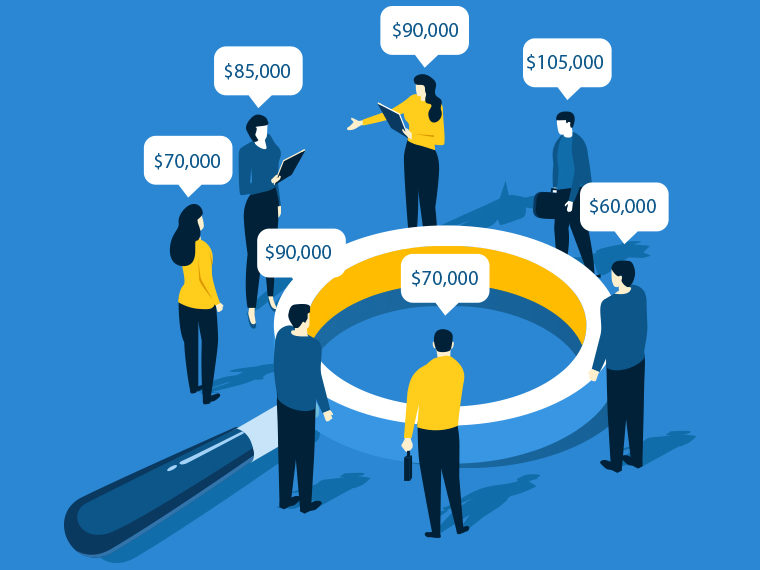Tweaking 401(k) website design and language can significantly boost worker contributions, yet HR doesn’t always see these opportunities
Forty years after the Internal Revenue Code was amended to enable tax-deferred, employer-sponsored savings plans, now widely known as 401(k)s, persuading Americans to actually set aside adequate money for retirement remains a work in progress. It also is a fertile field for behavioral experts who design nudges to encourage individuals to help themselves.
Some highly effective nudges were incorporated into the 2006 Pension Protection Act, notably, a provision allowing employers to automatically enroll workers in a retirement plan, rather than require they opt in. Ten years on, the number of Americans saving in 401(k)s or other defined contribution plans had grown to more than 100 million, a 25 percent increase.
Yet automatic enrollment isn’t nearly enough. Employers with such plans must also decide what percent of an employee’s salary they will contribute to the plan. The most popular “default” contribution rate is 3 percent, whereas financial planners and other experts would recommend 10–15 percent.
Opt In to the Review Monthly Email Update.
Moreover, a 3 percent contribution rate is typically not enough for an employee to snag the biggest possible matching employer contribution. That’s leaving money on the table — the company’s money.
The same 2006 legislation that enabled automatic enrollment also green-lit an effort to correct too-low contribution rates. Drawing on the 2004 Save More Tomorrow research by the University of Chicago’s Richard Thaler and UCLA Anderson’s Shlomo Benartzi, plans were told they could also offer to automatically increase contribution rates, typically by 1 percentage point per year. According to investment consultant Callan, more than 7 in 10 plans now offer this automatic escalation feature. Alas, 43 percent of the plans that offer auto escalation require an employee to choose the feature, rather than automatically enroll them.
Auto escalation helps nudge workers out of their inertia, but it’s a slow road to an adequate saving rate and will seriously limit the size of your ultimate retirement fund, given that the early dollars compound the longest.
That puts a premium on identifying any additional nudges that might compel employees to get to a higher saving rate faster. Carnegie Mellon’s Saurabh Bhargava and Lynn Conell-Price, City, University of London’s Richard Mason and Benartzi, in a working paper, report that a few well-placed design tweaks in the initial communication with a new participant can compel employees to choose to save more than double the default rate at which the plan would otherwise start them.
The researchers conducted three field studies that involved more than 8,500 employees in 500 separate 401(k) plans administered by Voya Financial that use automatic enrollment. Full disclosure: Benartzi is an advisor at the Voya Behavioral Finance Institute for Innovation. Mason is a Voya employee.
They focused on interactions with the 20 percent of workers who bother to log in when they are initially enrolled. The plan’s landing page typically asks employees to choose among three options: accept the automatic enrollment and default contribution rate set by the plan, accept enrollment but choose to “personalize” the contribution rate or decline to join the plan.
The researchers studied whether simple design tweaks in the wording and appearance of the digital pages, and the placement of specific factual information, could nudge employees to choose a contribution rate above the default.
User-friendly language replaced cautionary, stuffy text. Participants saw “I want to personalize my enrollment by selecting a different savings rate,” rather than “Selecting this option will cancel your scheduled automatic enrollment.” Another option was simply “Do it for me” rather than “I want to confirm my automatic enrollment.” Participants were also given a color-coded nudge. The “personalize” option was a green button. Confirming they wanted to stick with the automatic deferral rate required clicking on a yellow button. Declining to participate was a red button.
The researchers also tested whether showing the participant the contribution rate required to earn the maximum employer matching contribution — typically more than the default contribution rate — would compel participants to choose to save more.
The combined effect of these tweaks boosted the percentage of employees who opted to “personalize” by 9 percentage points, to nearly 70 percent. The average contribution rate among participants who took the green-light prompt to personalize was 7.8 percent, compared to 3.4 percent for participants who chose the yellow-light route of accepting the auto enrollment with the default contribution rate.
Just to see the difference between those two saving rates, fire up a savings calculator. You’ll see that over a hypothetical 30-year career, on a salary of $100,000 each year that earns a 6.5 percent return, the 7.8 percent contribution piles up about $719,000; the 3.4 percent set-aside results in about $313,000. The goal of the nudges, of course, is to start people at a high rate of contribution and keep moving them up.
Not only do these “psychological design” hacks improve saving rates, they have the added allure of being cost-effective. Getting a plan administrator to redesign a website landing page is a heck of a lot cheaper than ponying up a higher company match to encourage employees to contribute more. The researchers estimate that their landing page design tweaks are equivalent to a plan’s boosting its matching contribution by 3.7 percentage points.
Yet the folks in charge of 401(k) plans — administrators, HR executives and fiduciaries — seem unaware of this low-hanging fruit. More than 300 decision-makers were surveyed by Bhargava, Conell-Price, Mason and Benartzi. On average, they said they expected these simple changes on landing pages would decrease participation.
“Those responsible for the administration and oversight of retirement savings plans would benefit from a deeper, evidence-based, understanding of psychological design,” the researchers write. “Alternatively, these findings emphasize the value of expanding the purview of fiduciary responsibility beyond its present focus on economic plan structure and information disclosure to include considerations of psychological design.” Meaning, plan officials are responsible for actually thinking about how workers react to 401(k) materials.
American households would benefit from this effective nudge to save more.
Featured Faculty
-
Shlomo Benartzi
Professor of Behavioral Decision Making
About the Research
Bhargava, S., Conell-Price, L., Mason, R.T., & Benartzi, S. (2018). Save(d) by design.






